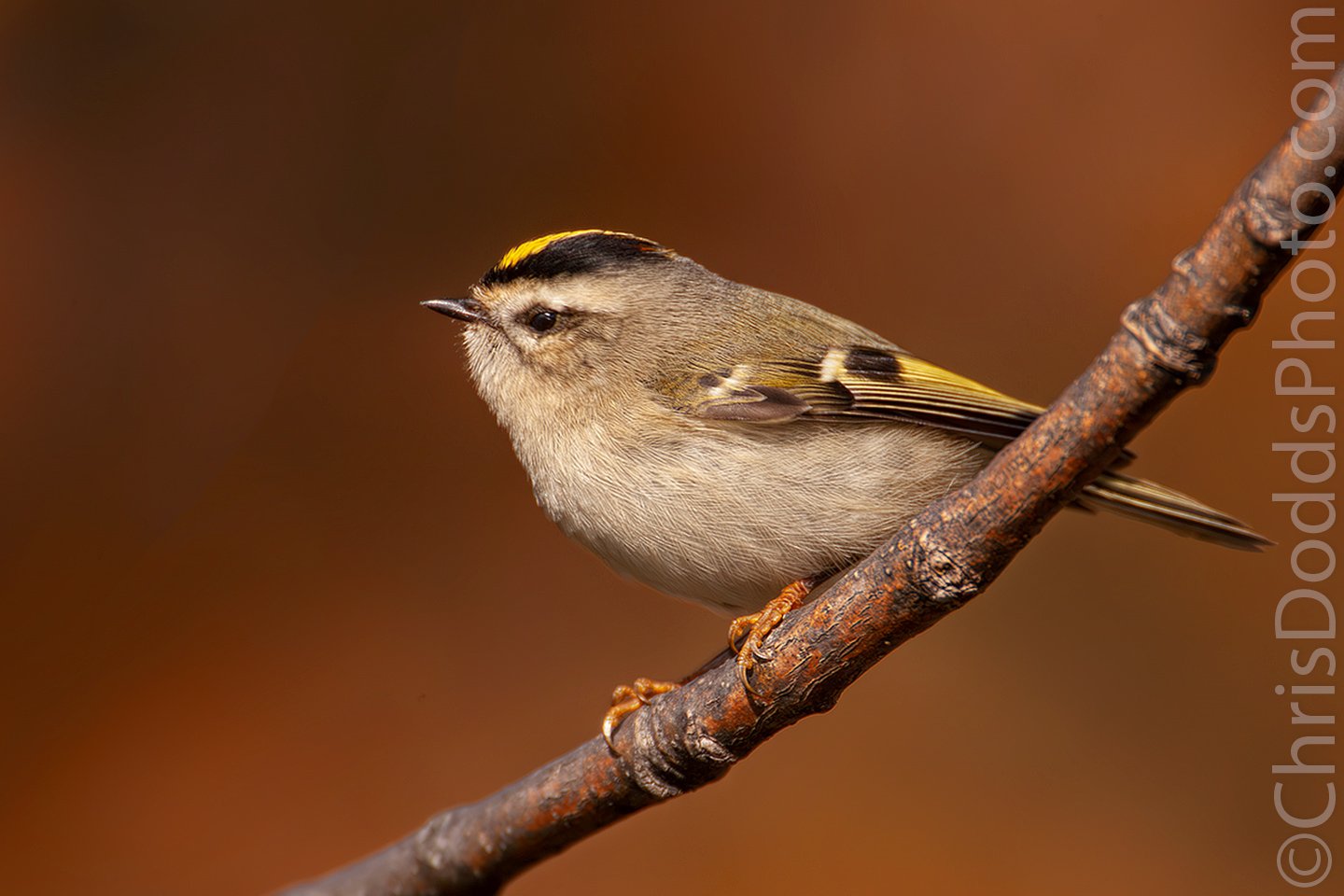As a bird photographer and workshop leader, few places on Earth are as magical as Point Pelee National Park during spring migration. And among the countless avian jewels that pass through this birding mecca, one tiny dynamo consistently presents immense challenge and reward: the Ruby-crowned Kinglet.
I've just wrapped up another incredible "Songbirds of Pelee" workshop, and as always, the kinglets were a significant topic of conversation – and often, a source of frustration! These little bundles of energy, barely larger than a hummingbird, are constantly in motion. They flit, hop, and dart through the foliage with a seemingly endless supply of caffeine. One moment, they're there; the next, they've vanished, only to reappear a few feet away, meticulously gleaning insects from every crevice.
This constant movement is precisely what makes them so incredibly difficult to photograph. You need fast shutter speeds, quick reflexes, and a healthy dose of patience. Just when you think you've got them in your viewfinder, they've moved on. It's a dance of anticipation and split-second decisions, and every sharp shot feels like a hard-won victory.
I always emphasize an ethical and respectful approach to bird photography during my workshops, especially during migration. We are keenly aware that these birds are expending tremendous energy on their incredible journeys. Therefore, our philosophy is firmly rooted in documenting their lives as they naturally unfold, without any intervention. This means we never use setups. There's no food, no water drip or bird bath, no artificial perches, and no callback to attract them to a "designed" scene.
Our goal is to be observers, to capture the raw beauty and resilience of these creatures as they fuel up and rest before continuing their arduous migrations. We rely on our field skills, understanding of bird behaviour, and ability to anticipate their movements in their natural habitat. When you finally capture that elusive Ruby-crowned Kinglet, perhaps with a hint of that fiery crown peeking through, you know it's a genuine moment, a testament to the bird's natural behaviour and your perseverance.
And what a feeling it is to get that shot! That tiny, bright ruby patch, often hidden, is a testament to their vibrant life force. Photographing the Ruby-crowned Kinglet at Point Pelee isn't just about getting a good image; it's about connecting with the sheer determination of these incredible migrants and appreciating the wild beauty of their journey. It's a humbling reminder of the delicate balance of nature and our role in respecting it.
You know the challenge if you've ever tried photographing these little gems. But for those of us who love it, it's a challenge we eagerly embrace, year after year, here in the avian paradise that is Point Pelee.
Ruby-crowned Kinglet (Regulus calendula, Roitelet à couronne rubis, Reyezuelo rubí, RCKI). From my Songbirds of Pelee Workshop, May 2025, at Point Pelee National Park of Canada. Image Copyright ©Christopher Dodds. Sony a9 III Mirrorless camera & Sony FE 400-800mm f/6.3-8 G OSS Lens @720mm ISO 10,000, f/8 @ 1/5,000s. Manual exposure.



















